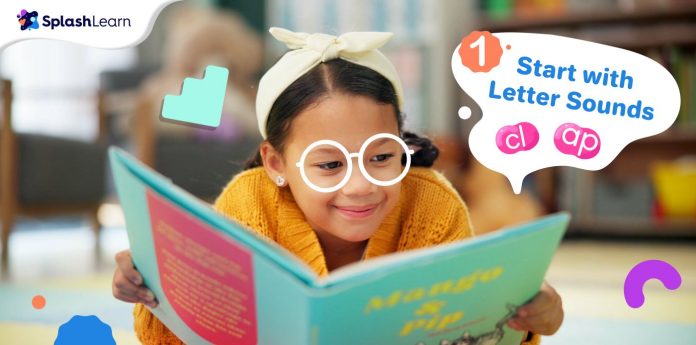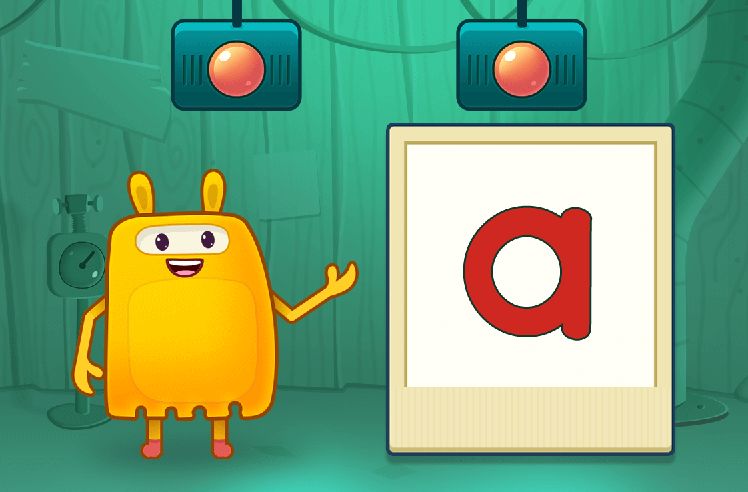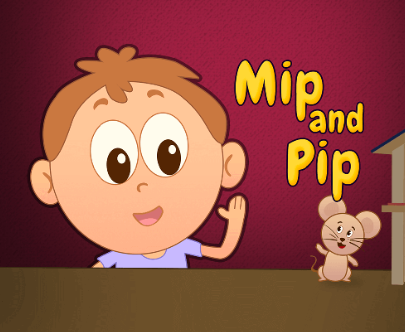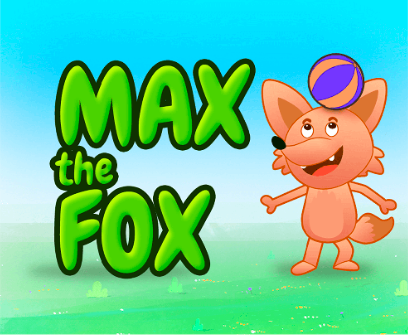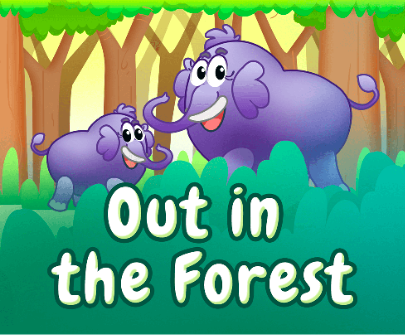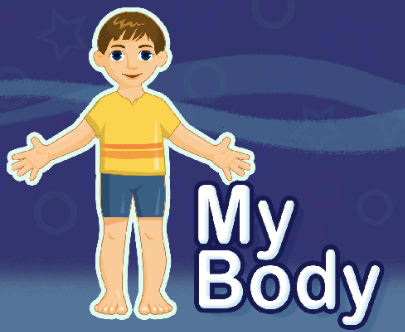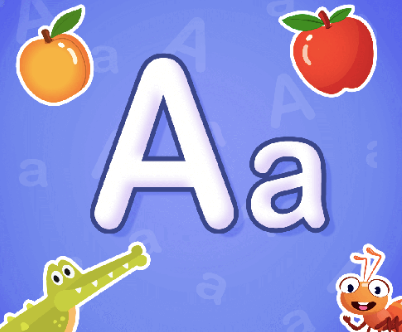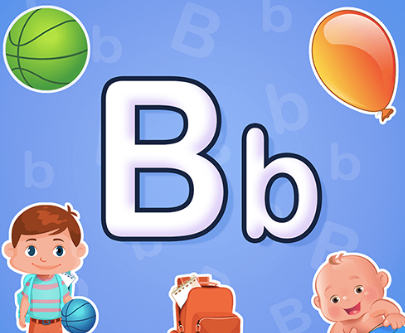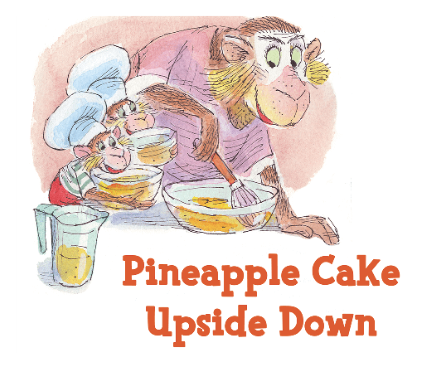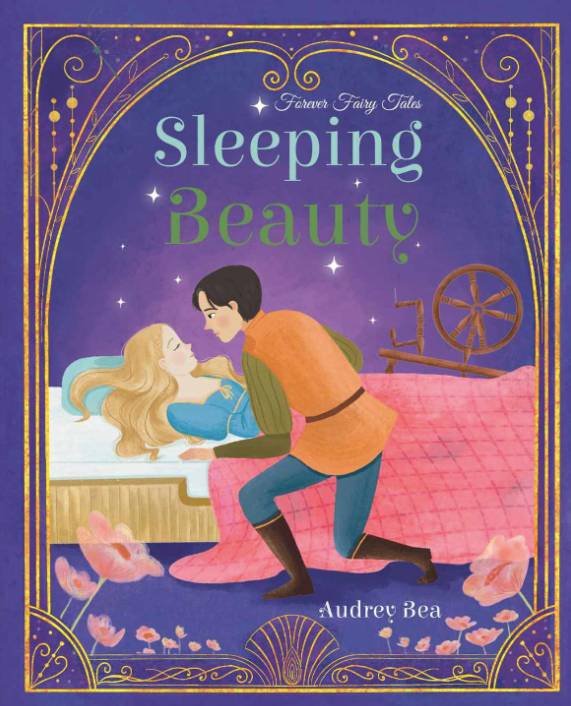Reading is one of the most important skills your child will ever learn. Research indicates that children who are read to from birth start school with larger vocabularies and a greater interest in reading. Yet, for many parents, teaching reading can feel overwhelming. Where do you even start? With so many components like phonics, sight words, and letter sounds, is there a correct order to follow? The good news is there is a clear, research-backed approach. Understanding how to teach kids to read using evidence-based methods can make a significant difference in your child’s reading success.
Math & ELA | PreK To Grade 5
Kids see fun.
You see real learning outcomes.
Watch your kids fall in love with math & reading through our scientifically designed curriculum.
Parents, try for free Teachers, use for free
The science of reading shows that a combination of phonemic awareness, phonics, fluency, vocabulary, and comprehension is key to building strong readers. This guide breaks down 8 proven strategies rooted in these principles that parents can use to teach their children to read with confidence.
Why is Reading Important?
Understanding the importance of reading is crucial in teaching kids how to read. Here are three reasons why:
- Boosts Brain Development: According to studies from the American Academy of Pediatrics, reading to children from infancy stimulates brain regions associated with language and literacy, laying the foundation for stronger language skills later in life.
- Builds a Strong Vocabulary: Children who are exposed to books at an early age hear up to 1.4 million more words than children who aren’t read to, a phenomenon often referred to as the “million-word gap.” This vocabulary advantage directly supports academic success.
- Sets the Stage for Academic Success: Early reading skills have been linked to better performance in all school subjects, not just English. The National Early Literacy Panel found that early literacy skills predict later academic achievement.
These points highlight why mastering reading is critical, emphasizing the need for effective strategies in teaching kids to read.
8 Easy Steps and Tips To Teach A Child To Read
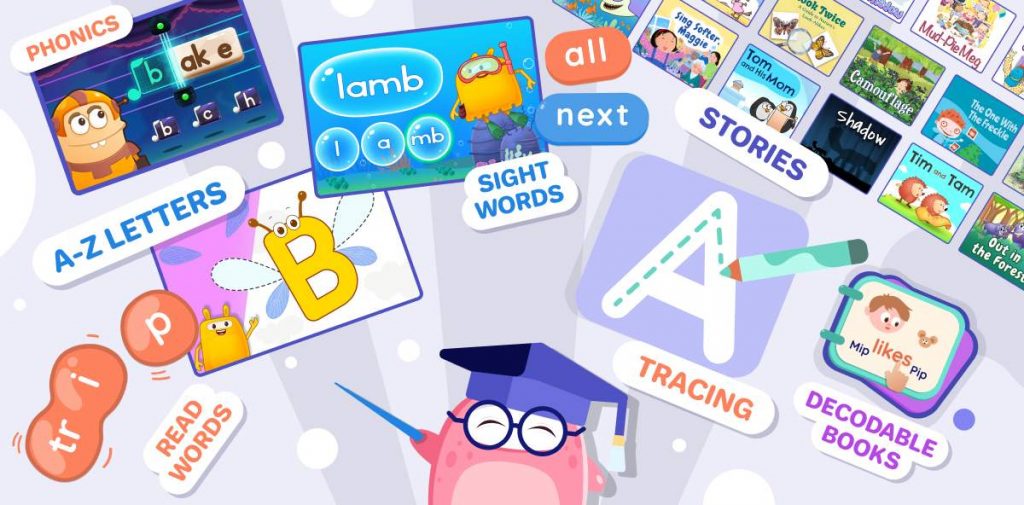
1. Start with Letter Sounds
When children start learning letters, it’s easy to focus on their names. But understanding the sounds that letters make is the key to helping your child read. Sounds bring letters to life, connecting them to the words your child will eventually learn to read and write.
Each letter of the alphabet represents one or more sounds. For example, the letter D makes a sound like /d/, as in the word “dog.” Helping your child hear and recognize these sounds makes it easier for them to form words later. This is the first step in how to teach kids to read.
Activities to teach letter sounds:
- Start with familiar words: Pick simple, everyday words your child knows, like “cat” or “dog.” Break them into their sounds: “C makes /k/, A makes /a/, and T makes /t/.” This helps them connect sounds to letters naturally.
- Make learning sounds interactive: Sound games help your child recognize and understand the sounds each letter makes. In these games, kids hear a sound (from A to Z) like /a/ or /b/, and have to match it to the correct letter among several options. Each sound is carefully pronounced, making it easy for kids to hear and learn the correct sound. Kids actively listen and identify the right sound, reinforcing their ability to link sounds with letters while mastering all the letter sounds in the alphabet.
Match Sounds to Letters
Match letters to their sounds to build phonics skills and master the alphabet
- Use visual aids: Create or use flashcards with letters and pictures of objects that start with that letter’s sound. For instance, a card with S could show a snake. Say, “S sounds like /s/, just like in snake.”
If your child already knows the alphabet by name, don’t worry—they can still learn the sounds. Focusing on letter sounds as a next step will help them make the connection between letters, sounds, and words.
Related Reading: How to Teach Letter Sound in 6 Easy Steps
2. Learn the Alphabet
Learning the alphabet is a crucial step for your child to recognize written language. To ensure reading success, focus on recognizing, naming, and forming alphabet letters and understanding the sounds associated with each letter.
Activities to teach alphabets:
- Begin with uppercase letters: Uppercase letters are simpler to recognize and write because of their clean, distinct shapes (e.g., A, B, C). Once your child recognizes uppercase letters, gradually introduce lowercase ones. Use matching activities to reinforce their connection. Here are some fun matching games, where your child will help the character Buc Buc find hidden letters by matching uppercase A’s with lowercase a’s. This activity strengthens their ability to identify letter pairs while improving visual matching skills, an essential part of mastering the alphabet.
Pair Big and Small Letters
Help kids pair big and small letters to strengthen recognition and matching skills
- Letter tracing: Use printables to let your child trace letters with their finger, crayon, or a paintbrush. This helps with recognition and fine motor skills. Here are tracing worksheets where your child will follow dotted lines to trace uppercase and lowercase letters. Tracing within the dotted lines teaches your child how to write letters correctly and stay within boundaries, which builds handwriting accuracy.
Trace Letters with Dotted Lines
Teach kids to write uppercase and lowercase letters while improving their handwriting accuracy
- Build letters with objects: Use items like play dough, building blocks, or string to construct letters. This makes learning tactile and memorable.
- Alphabet matching games: Create simple matching worksheets where your child pairs letters with corresponding objects or images (e.g., M matches with a picture of milk)
Match Letters to Pictures
Pair letters with their corresponding images, like ‘M’ with milk, to boost letter recognition
Note: Some letters, like b and d or p and q, can confuse children because they look similar. Use visual cues, like “b has a bat and ball” or “d is a drum,” to make them memorable. Practice forming the letters with your child and reinforce their shapes by spotting them in everyday words like “bed” or “dip.”
Related Reading: How to Teach Alphabet to Kids
3. Use Phonics to Build Words
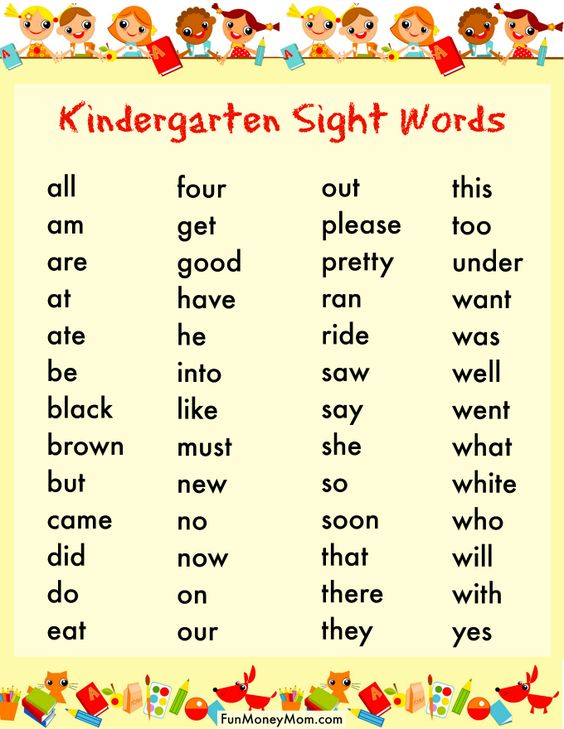
After your child learns letters and their sounds, the next step is showing them how to combine those sounds to read words. This stage involves combining letters to form simple words, focusing on basic phonetic patterns and common sight words. This process, often called “sounding out,” helps them read words they haven’t memorized yet.
Activities to teach phonics:
- Use a slow and steady approach: Write a simple word, like “cat,” on paper. Point to each letter and say the sound slowly: “/c/…/a/…/t/.” Then, blend the sounds together to form the word: “cat!” Encourage your child to repeat after you.
- Use blending games: Your formula for how to teach reading to kids works best when lessons are interactive and engaging. Blending letters to form words can be tricky, but games make it enjoyable and effective. Here are blending games, where kids are guided by a fun character and presented with bubbles containing letter blends. Each blend is clearly sounded out so they can hear exactly how it should sound. The goal is to arrange the bubbles to form complete words, reinforcing the connection between sounds and letters.
Build Words with Blends
Arrange letters to form words and hear how blends come together to build vocabulary
- Play “What’s the Word?”: Say a word very slowly, stretching the sounds apart: “/b/…/a/…/g/.” Ask your child to guess what the word is. Once they get it, show them how those sounds match the letters.
- Get your child to read decodable books: Decodable books are perfect for children practicing phonics. They use simple, repetitive words that match the letter sounds and patterns your child is learning, like “The cat sat on the mat.” For example, if your child is working on short vowel sounds, these books provide words like “bat,” “red,” or “sun” for focused practice. Many decodable books also include “Read to Me” and “Read Yourself” features, letting your child first hear the story aloud before attempting to read it independently. This builds confidence and lets you track their progress effectively.
Related Reading: How to Teach Phonics to Kids
4. Focus on Sight Words
Once your child has started sounding out words, the next step is teaching them to recognize certain words by sight. These are words that appear often in books but can be tricky to sound out, like “the,” “said,” and “was.” By helping your child memorize these high-frequency words, you’ll make reading much faster and easier for them.
Activities to teach sight words:
- Start with common words: Choose a small group of frequently used words, such as “and,” “the,” and “it.” These words are often found in beginner books, so your child will see them repeatedly. Work on 3-5 words at a time until your child can recognize them consistently.
- Play sight word games: Sight word games make learning exciting by turning practice into a fun activity. Kids collect a specific sight word in these games by dragging and dropping it into a cart. The game begins with just the target sight word for easier recognition, and as they progress, they have to pick the correct word from a group of others. With interactive sounds and engaging visuals, these games help kids focus, improve accuracy, and quickly recognize sight words while having fun.
Collect and Identify Sight Words
Drag and drop sight words into the correct cart to improve recognition and focus
- Bingo: Create a bingo card filled with sight words and mark them off as you call them out.
- Incorporate writing: Encourage your child to practice writing sight words. They can trace them first and then try writing them from memory. Here are some fun worksheets where kids start by tracing the word multiple times, which helps them learn proper letter formation and remember how the word looks. Then, they search for and circle the word from a group of other words, teaching them to quickly recognize sight words in larger texts.
Practice Writing Sight Words
Trace, write, and recognize sight words to improve word memory and reading fluency
5. Practice Reading Fluency
Now that your child knows some sight words and can sound out others, the next step is helping them read more smoothly and confidently. Fluency is about reading at a natural pace—without frequent stops to figure out words—and adding expression to bring stories to life.
Activities to build reading fluency:
- Read with them: Choose books that are just below or at your child’s current reading level. This ensures they can focus on fluency instead of decoding new words. Let your child follow along while you read a storybook with expressive narration. This helps them hear how fluent reading sounds. Here are some fun read aloud that you can assign to your child:
- Model fluent reading: Show your child how fluent reading sounds by reading aloud with expression. Use pauses, tone, and changes in volume to match the story’s emotions. For example, make your voice loud during an exciting scene or soft during a quiet moment.
- Make It interactive timed challenges: Select a short passage and time how long your child takes to read it. Encourage them to improve their time each day while staying accurate. Character Voices: If the story has dialogue, ask your child to read different characters’ lines using fun voices to match their personalities.
Related Reading: Best Reading Fluency Activities for Young Readers
6. Build Comprehension Skills
Reading isn’t just about saying words aloud; it’s about understanding what they mean. Helping your child comprehend stories, articles, or even simple sentences will make reading a richer experience for them.
Activities to build reading comprehension:
- When your child is reading, encourage them to-
- Ask questions while reading
- Summarize the story
- Make connections
- Visualize the story
To support this process, use these worksheets that are designed for building comprehension skills can be a valuable tool. These worksheets guide kids in practicing how to think critically and understand what they read.
Boost Reading Comprehension
Help kids analyze stories, summarize, and think critically with engaging worksheets
Related Reading: Best Reading Comprehension Activities for Kids
7. Encourage Conversations
Regular conversation plays a crucial role in language development, serving as a foundational step in how to teach kids to read.
How to do it:
- Engage your child in conversations throughout the day. Discuss a wide range of topics, from what they did at school to stories you read together.
- Ask open-ended questions to encourage them to think and express themselves. This helps build their vocabulary and understanding of language structures, which are crucial for reading comprehension.
Related Reading: Great Ice Breaker Questions for Kids to Share
8. Encourage Independent Reading
Once your child can read with comprehension, it’s essential to help them develop the habit of reading independently. This strengthens their skills and instills a lifelong love for reading. If you want to help your child become a confident and skilled reader, finding books that match their abilities and grow with them is important. Here are books ranging from read-aloud, to leveled readers to bedtime stories:
- Read-Aloud books: These books are perfect for reading out loud with your child. They encourage interactive sessions that build listening skills and expand vocabulary.
- Leveled readers: Leveled readers are carefully designed to match your child’s reading abilities at each stage. They introduce controlled phonics patterns, simple sentences, and new vocabulary gradually.
- Decodable books: Decodable books focus on phonics, helping your child practice sounding out words. These books are great for beginner readers as they reinforce early reading skills, helping kids decode words independently while boosting their confidence.
- Bedtime stories: Bedtime stories are calming and comforting, making them a great way to end the day.
All these books offer “Read to Me” and “Read by Myself” options, allowing your child to choose between listening or reading independently. You can even track their progress through an easy-to-use dashboard, giving insights into their reading journey.
Once you have chosen the books for your child:
- Create a reading routine: Set aside a specific time each day for your child to read independently. It could be 10-15 minutes before bedtime, after school, or during quiet time. Consistency is critical to making reading a habit.
- Offer a variety of books: Provide access to different types of books, including:
- Fiction and non-fiction
- Chapter books for longer stories
- Picture books or graphic novels for visual engagement
Let them choose books that interest them—it keeps the experience fun and personalized.
- Set small goals: Help your child set simple reading goals, like finishing a chapter or reading a certain number of pages daily. Celebrate their progress to keep them motivated.
- Create a cozy reading spot: Designate a quiet, comfortable space in your home where your child can read without distractions. A cozy corner with pillows, good lighting, and a stack of books can make reading more inviting.
Monitor Kids’ Reading Progress
In the journey of how to teach a kid to read, keeping a reading log or chart to track the books your child reads and note any new words or concepts they learn is very crucial. Regularly sit with your child while they read, noting their fluency, accuracy, and comprehension. Celebrate their achievements, no matter how small, to keep them motivated.
How to know the progress of your child’s reading journey:
- You will see a gradual increase in the number of words your child can read and understand.
- They’ll start to read more fluently, with less hesitation, and will be able to discuss the books they’ve read with greater depth.
- Their reading log will show a broader range of books and topics, indicating a growing interest and comprehension level.
Use SplashLearn to Keep Track of Your Child’s Reading Progress:
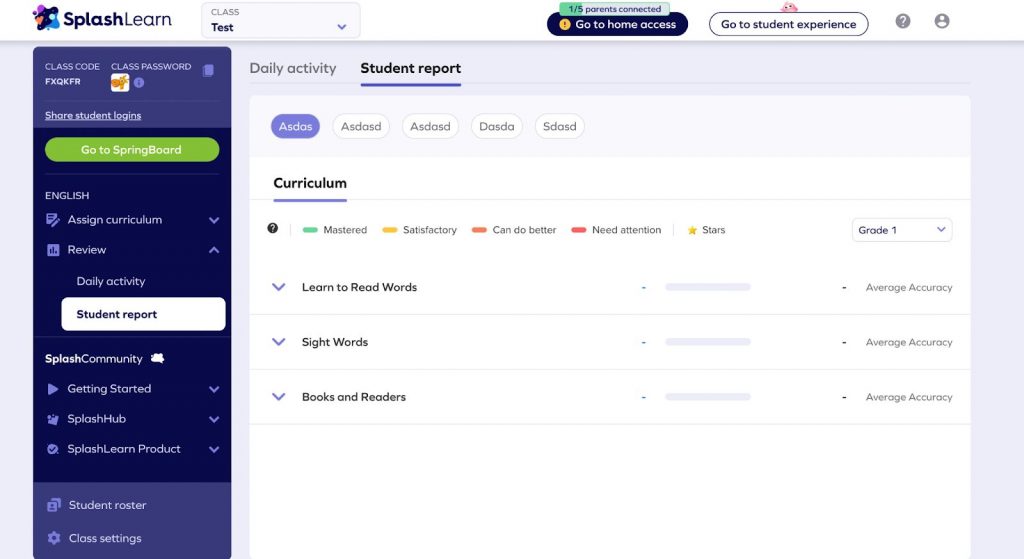
A Reader’s Journey: Simple Steps on How to Teach Your Child to Read
With these simple steps on how to teach kids to read, you can help kid become a reader in no time! Reading is an essential life skill, and with the right tools and techniques, you can make sure your child masters it. Be sure to praise your students for their efforts and successes, and don’t forget to have fun while reading together!
Related Reading: Best Reading Websites For Kids
Frequently Asked Questions (FAQs)
When do you consider a child to be a reader?
There is no one answer to this question, as reading proficiency varies from child to child. However, a good rule of thumb is to consider a child to be a reader when they are able to read fluently and understand what they are reading.
How can phonological awareness help children become better readers?
Phonological awareness is hearing and identifying the individual sounds that makeup words. Teaching phonological awareness is an essential step in reading instruction. There are a variety of ways that teachers can help students learn about phonology. One way is to provide students with word cards. Another way is to use phonemic cueing.
What should I do if my students are struggling with reading?
If your students are struggling with reading, it is important to find out the root of the problem. One way to do this is by using a reading assessment. Once the problem has been identified, teachers can provide students with the appropriate interventions. In addition, it is important to monitor the child’s progress and ensure they are making adequate progress.
Is silent reading better for students than reading aloud?
Some students prefer silent reading, while others prefer reading aloud. It is important to allow students to choose the type of reading that works best for them. However, teachers need to provide both types of reading so that all students have the opportunity to experience both.
How can I teach kindergarten to read?
Start by introducing letters and sounds, then gradually move to simple words and sentences. Reading aloud daily is key.
What should I focus on when teaching how to read?
When looking for steps on how to teach a child to read, remember to emphasize phonics for decoding words, incorporate plenty of reading practice, and use engaging books to spark interest and comprehension.
How do I make teaching reading fun and effective?
Incorporate games, songs, and interactive reading activities focused on phonics and vocabulary to make the steps in teaching reading enjoyable and engaging.
How long does it take to teach a child to read?
The time it takes to teach a child to read varies, typically ranging from 6 months to 2 years, depending on the child’s age, learning abilities, and the teaching method used.

















